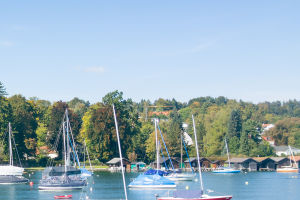The terraces are strip-like fields built on the high lines of the hillside land. They are effective measures to control water and soil loss in slope farming and have significant effects on water storage, soil preservation, and crop production.
The ventilation of the terraces is excellent, which is conducive to crop growth and the accumulation of nutrients.
Due to various natural geographical conditions, the labor force, land use, and farming habits, the forms of terraces are also different. Terraces are mainly divided into four types: horizontal terraces, slope-type terraces, anti-slope terraces, and slopes.
The width of the terraces depends on the size of the ground slope, the thickness of the soil layer, the cultivation method, the amount of labor, and the economic conditions. The irrigation system and the traffic road should be uniformly planned.
Terraces exist in many parts of the world, distributed up along the steep hillside layers like steps built for giants. They are flat grounds cut into the hillside for planting crops. It is one of the most amazing ways of human transformation.
Terraces first appeared in pre-historical periods. At first, people cleared forests or hills to plant food crops or as defensive work. In the same period, terraces began to appear around the world.
With the development of agriculture and the growth of the population, terraces have gradually become a common farming method and have formed a special terraced culture in different regions.
For example, the Southern terraces in China, the Banaway terrace in the Philippines, and the Macquetti Terraces of Peru have become local famous attractions and cultural symbols.
Many well-known terrace scenic spots exist in Japan, such as the Tianchuan District of Fukuoka Prefecture, Nikko City in Miyazaki Prefecture, and Asu Mountain in Kumamoto Prefecture. The terraces in Japan are more delicate and have their unique style and characteristics, loved by tourists.
In Indonesia, Bali Island has a famous terrace. The terraces here are mainly used for planting rice, which is considered sacred land by residents. These terraces are listed as World Cultural Heritage by UNESCO for their unique design and cultural background.
Moreover, many countries and regions have their unique terraces, such as the Philippines, Vietnam, South Korea, and other Southeast Asian countries, as well as South American countries such as Peru and Bolivia.
Terraces change the surface form, providing a vast cultivated land area. They have become a beautiful landscape, making people marvel at the hard work and wisdom of the working people.
Terrace and terrace culture are great miracles of human farming civilization. They not only have high ecological value but also provide agricultural products, ecological support, environmental regulation, and cultural entertainment.
Terraces can change the terrain, stop rainwater, reduce runoff, improve the soil, and increase soil moisture. Therefore, terraces play a very prominent role in promoting the agricultural development of mountains and hills and improving the ecological environment.
Besides their active role in agricultural production and the ecological environment, terraces also have important cultural value. In many areas, terraces have become local cultural symbols and tourist attractions, attracting many tourists to watch and experience them.
With the process of urbanization and modernization, many terraces are gradually disappearing or being damaged. Therefore, protecting and restoring terraces have become an important task in today's society.
In this process, we need to comprehensively consider factors such as land use, ecological protection, and cultural heritage and take effective measures to protect the crystallization of human wisdom and labor.


